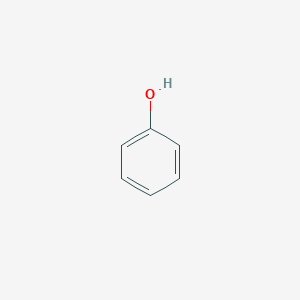Pain, oropharyngeal
Adult: For the temporary relief of minor mouth irritation, sore mouth or throat pain, and canker sore pain: As 1.4% spray: 1 spray to the affected area, allow to remain for at least 15 seconds then expectorate. May repeat every 2 hours as needed. As 0.6% oral rinse: Gargle or swish for 15 seconds then spit out; may repeat every 2 hours as necessary. Do not use >12 times daily. Consult the doctor if symptoms do not improve in 7 days, or if irritation, pain, and redness continue or worsen. As phenol 0.175% w/v and halogenated phenols 0.68% w/v aqueous solution: Dilute the solution with 5 parts water, then gargle bid. For common mouth ulcers: May apply the undiluted solution using a clean swab onto affected area(s) tid. Seek medical advice if symptoms persist for >14 days. Dosage recommendations may vary among individual products and between countries (refer to specific product guidelines).
Child: For the temporary relief of minor mouth irritation, sore mouth or throat pain, and canker sore pain: As 1.4% spray: ≥3 years Same as adult dose. Use in children <12 years must be supervised. As 0.6% oral rinse: 4 months to <12 years Apply to affected area with a clean swab up to 6 times daily; ≥12 years Same as adult dose. Dosage recommendations may vary among individual products and between countries (refer to specific product guidelines).
Child: For the temporary relief of minor mouth irritation, sore mouth or throat pain, and canker sore pain: As 1.4% spray: ≥3 years Same as adult dose. Use in children <12 years must be supervised. As 0.6% oral rinse: 4 months to <12 years Apply to affected area with a clean swab up to 6 times daily; ≥12 years Same as adult dose. Dosage recommendations may vary among individual products and between countries (refer to specific product guidelines).
Oral
Pain, oropharyngeal
Adult: For the temporary relief of minor mouth irritation, sore mouth or throat pain, and canker sore pain: As 29 mg loz: Dissolve up to 2 loz slowly in the mouth every 2 hours as necessary. Check with the doctor if symptoms last for >7 days, or if irritation, pain, and redness continue or worsen.
Child: For the temporary relief of minor mouth irritation, sore mouth or throat pain, and canker sore pain: As 29 mg loz: 6-<12 years Dissolve 1 loz slowly in the mouth every 2 hours as needed. Max of 10 loz in 24 hours; ≥12 years Same as adult dose.
Child: For the temporary relief of minor mouth irritation, sore mouth or throat pain, and canker sore pain: As 29 mg loz: 6-<12 years Dissolve 1 loz slowly in the mouth every 2 hours as needed. Max of 10 loz in 24 hours; ≥12 years Same as adult dose.
Parenteral
Sclerotherapy of haemorrhoids
Adult: For symptomatic treatment of internal haemorrhoids: As oily phenol 5% submucosal inj: 2-3 mL inj into the submucosal layer at the base of the haemorrhoid. Alternatively, 2-5 mL inj into the submucosal space of the haemorrhoid or into the apex of the haemorrhoid. Several inj may be given at different sites. Max: 10 mL at any one treatment session.
Child: Contraindicated.
Child: Contraindicated.
Topical/Cutaneous
Antiseptic agent
Adult: For 1st aid to protect minor scrapes, cuts, or burns from skin infection: As 1.5% paint: Apply a small amount to the affected area 1-3 times daily. As phenol 0.175% w/v and halogenated phenols 0.68% w/v aqueous solution: Dilute the solution with an equal quantity of water, then apply. May be used undiluted in emergencies.




 Sign Out
Sign Out




